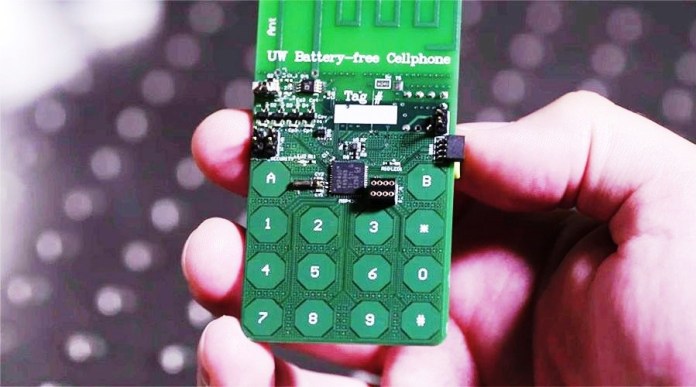In the near future, mobile phone users are not required to charge their cell phone battery for more extensive use.
Researchers at the University of Washington have invented the cell phone which requires no battery and it acts as a battery saver. Moreover, this cell phone battery is a major leap forward and reduces the need for chargers, dead phones, and chords. Instead, this battery saver cell phone uses micro watts of power and it requires either light or ambient radio signal.
In addition, this prototype cell phone battery required only 3.5 microwatts of juice and used an innovative approach which could as a battery saver in cell phones in the near future. Moreover, this cell phone battery uses ambient radio signal or light for transmitting a signal back to the base station located 50 ms away.
This prototype cell phone battery is made of simple components like capacitive touch buttons, circuit board, and other components. The unique and outstanding thing done by these researchers was that they were able to create to create a base station which could transmit a signal with such a small amount of power.
After that, these University of Washington researchers were making and receiving calls on another cell phone successfully. But, these scientists wanted to improve on this and practically tried using e-ink with video streaming capabilities and encrypted the call to make it more secure.
Recently a known scientist Vamsi Tall, who was the co-author of Paper, said that this base station was developed as an early prototype. Therefore, it can make the vision for battery saver cell phones a ubiquitous one.
Before making this research into a real-time product these battery saver cell phones require a small amount of energy for performing various cell phone tasks. This prototype had a power budget of 3.5 microwatts.
If we compare it with the modern smartphone base station than it involves two uplinks. First, uplinking cell phone to the base station and then downlinking the base station to a cell phone. Also, you have to enable the communication in both the uplinks. Most importantly, the communications researchers implemented the communication in the downlink because the power consumption was very high.
After this, the research team plans to improve the features and capabilities of the battery free cell phone for making encrypted communication among users. The research team will also be working on streaming video on this battery saver cell phone and then add a display to this cell phone for using a lower E-ink screen.
Read more: Digital Nervous System with IoT for Manufacturing
